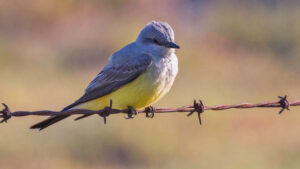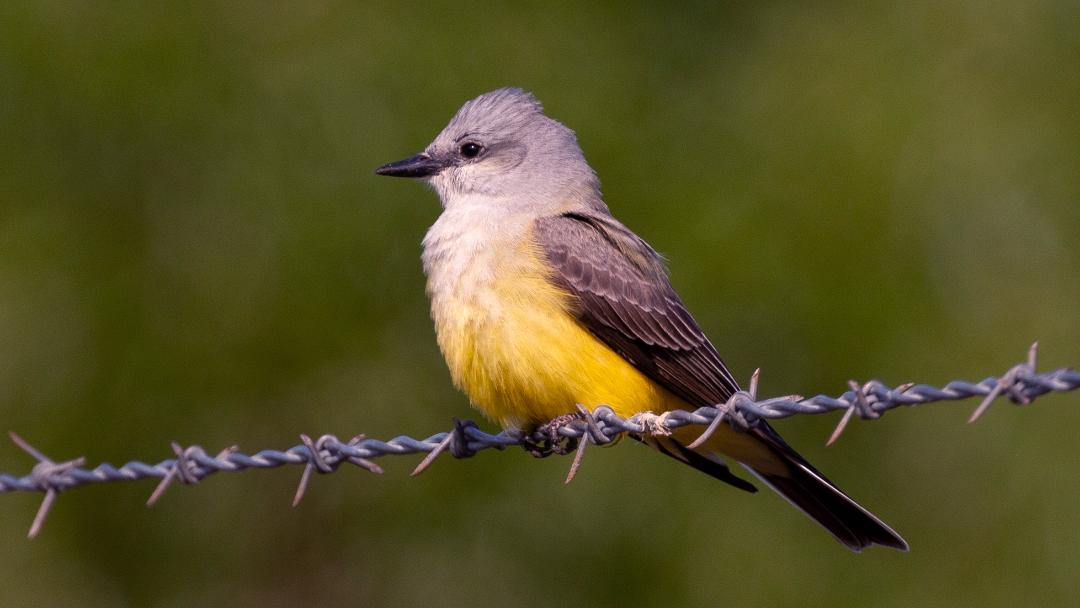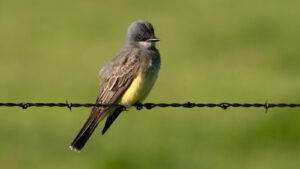
Number 4 in Jim Gain’s “Learn 100 Valley Birds” series is the Western Kingbird. Anyone who’s driven along the Valley’s many country roads during spring and summer has seen Western Kingbirds, whether or not they know the name. Below, Jim describes the field marks for these beautiful birds, and also alerts observers to watch for the far less common Cassin’s Kingbird.
Western Kingbirds are Common Summer Visitors to the San Joaquin Valley and are one of the earliest returning Neotropic migrants, usually arriving from Mexico and Central America in mid- to late March. Their sudden appearance along country road fence lines is a sure sign that spring has arrived. The also venture into town wherever there’s enough open space to hawk insects in flight.

Adult Western Kingbirds are typically seen perching on fence wires where they sally out to snatch flying insects. They are monomorphic (males and females have similar appearance), recognized by their yellow belly, all pale-gray chest and throat and gray-brown back. They will frequently flash their white outer tail feathers as they fly out from their perch.
Western Kingbirds belong to the Tyrant Flycatcher family (Tyrannidae) and are one of 7 kingbirds found in the US. Of those 7 species, only 2 are regularly found in the Central Valley. The other kingbird found regularly in the Central Valley (much rarer) is the Cassin’s Kingbird. Cassin’s Kingbird has white-tipped tail feathers instead of the white-edges. It also has a darker gray chest and head with a bold white chin.

Western Kingbirds belong to the Tyrant Flycatcher family (Tyrannidae) and are one of 7 kingbirds found in the US. Of those 7 species, only 2 are regularly found in the Central Valley. The other kingbird found regularly in the Central Valley (much rarer) is the Cassin’s Kingbird. Cassin’s Kingbird has white-tipped tail feathers instead of the white-edges. It also has a darker gray chest and head with a bold white chin. Check out the comparison image.
See more of Jim’s fine images and writing here.


I had not commented yet, on the sheer pleasure of these local birds. The photo art in all the posts is a gift for Valley Citizens. I have viewed all four numerous times when I need a reminder of what it is we citizens are supposed to be carrying on for. Too often our noses are facing the grindstone instead of looking up and all around. Thank you for your appreciation of the wild. We have so poorly managed the wilderness that tar, cement, dust, and chemicals are pretty much all we have left ourselves and our feathered friends.